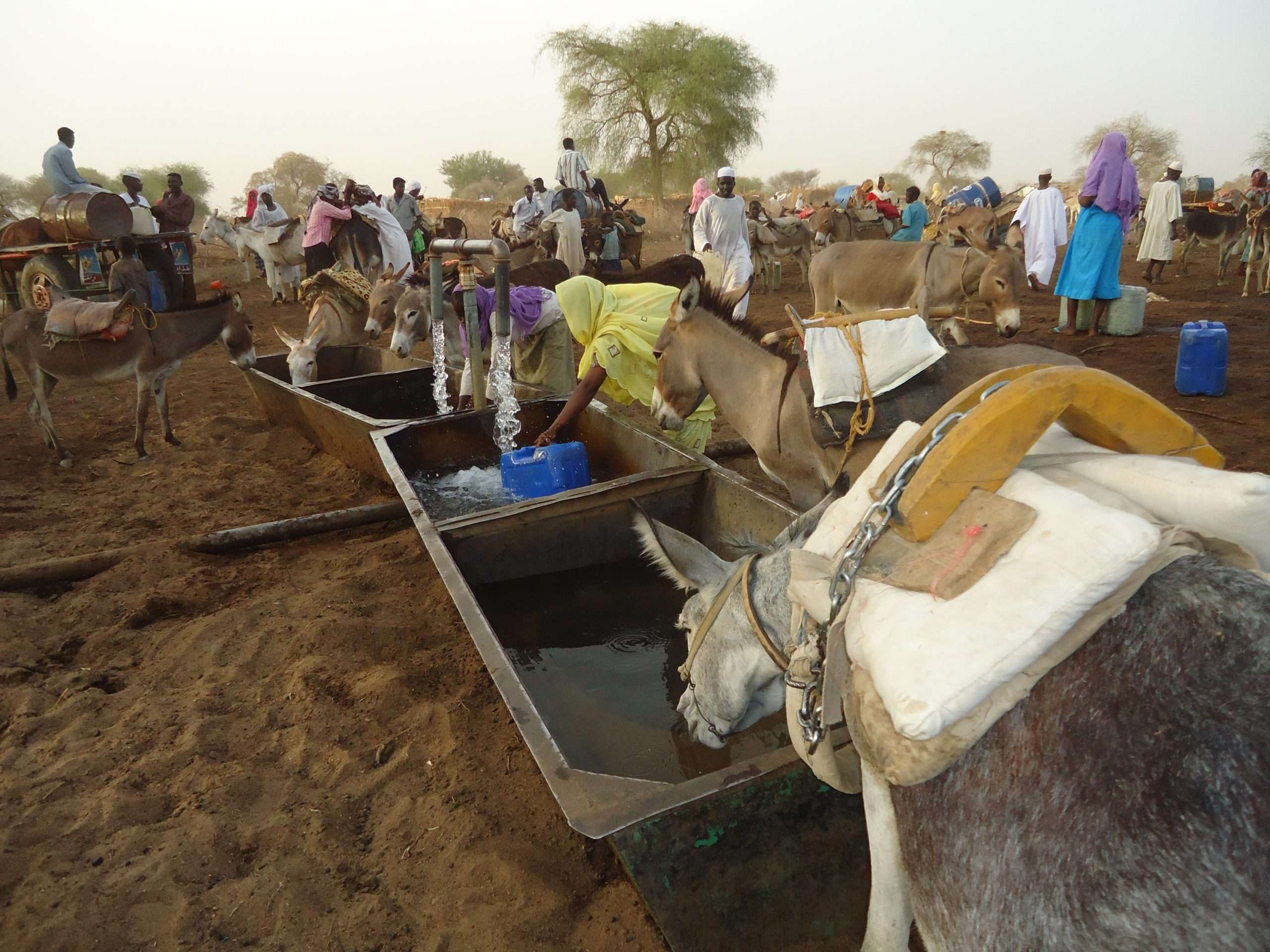
Climate change worsens conflict by increasing competition over dwindling resources, displacing vulnerable populations, and destabilizing governance in fragile regions. Sub-Saharan Africa highlights this issue, experiencing severe ecological challenges and weak governance. The Institute for Economics and Peace’s 2024 Ecological Threat Report identifies this region as having the highest water stress globally, with scarcity projected to worsen by 2040. The intersection of water stress, demographic pressure, and food insecurity fuels resource-driven disputes and intercommunal tensions, disrupting already fragile states. Within the region, Somalia and Sudan stand out as ‘hotspot countries’ where these dynamics are particularly acute. The USAID-funded Transition Initiatives for Stabilization Saddex (TIS3) program in Somalia and the USAID-funded Toward Enduring Peace and Stability (TEPS) initiative in Sudan, both implemented by DT Global, offer critical insights for addressing the climate-conflict nexus.
In their Ecological Threat Report, the Institute for Economics and Peace assigns data-driven scores out of 5 to highlight ecological stress factors, with Somalia and Sudan receiving some of the highest scores globally. For instance, Somalia receives a water risk score of 5, indicating extreme water scarcity exacerbated by five consecutive failed rainy seasons. Furthermore, the country’s Food Insecurity and Demographic Pressure Scores of 5 and 3.60, respectively, reveal the strain of prolonged drought on livelihoods and rapidly growing populations. The destruction of water infrastructure by al-Shabaab further compounds this crisis, forcing communities into competition over dwindling resources.
Sudan faces similar pressures, with a Water Risk score of 4.53 and an Impact of Natural Events score of 4.13, as the country endures prolonged droughts and persisting resource-based conflicts. Additionally, Institute for Economics and Peace assigns the state with Demographic Pressure and Food Insecurity scores of 4.01 and 4.22, as intense strain on agriculture and water resources exacerbates tribal tensions between pastoralist and farming communities. In both countries, resource scarcity and weak governance create conditions where ecological stress amplifies vulnerability to conflict and displacement.
TIS3 in Somalia and TEPS in Sudan provide valuable examples of how integrated and forward-thinking interventions can reduce resource-based conflict and build resilience. One critical endeavor is the role of infrastructure rehabilitation as a foundation for peace. In Somalia’s Middle Shabelle region, TIS3 rehabilitated the Adan Yabal Ceel Siyaad borehole, the only functional water source for a marginalized community devastated by drought and al-Shabaab's destruction of infrastructure. By increasing water supply for both households and livestock and constructing additional water troughs, this project reduced competition over resources and mitigated tensions between pastoralist and residential communities. Similarly, in Sudan, TEPS implemented solar-powered water yards in Darfur, which provided equitable water access to over 38,000 people, reducing disputes over scarce resources and supporting agricultural productivity.
Linking water access to livelihood support emerges as a critical strategy in addressing the root causes of resource-driven disputes. In Somalia, TIS3 connected water infrastructure projects to agricultural and pastoralist livelihoods, stabilizing incomes and reducing migration triggered by drought. TEPS employed a similar approach in Darfur, where the Kaila market offered displaced populations sustainable income opportunities, mitigating economic pressures that often escalate intercommunal tensions. Women-led gum arabic harvesting programs in Sudan further diversified livelihoods, reducing dependency on overused resources like grazing lands.
Another key step in ensuring sustainability and trust is the inclusion of community ownership in development implementation. In Somalia’s TIS3 program, encouraging community-managed water systems has enabled local groups to oversee resource allocation and distribution. This approach reduces the reliance on external actors and encourages equitable access to water, building trust between previously conflicting groups. In Sudan’s TEPS program, community-based committees were formed to manage rehabilitated water infrastructure, ensuring long-term sustainability. By engaging the local community, these initiatives promoted accountability and created structures for resolving resource disputes without external intervention.
Community dialogue is also essential for promoting cooperation and preventing disputes caused by ecological stress. TIS3’s discussions between and within clans in Somalia addressed tensions over shared water resources, preventing disputes from escalating into broader conflicts. Neutral mediators were engaged to build trust and ensure inclusive participation. In Sudan, TEPS’s training in conflict dynamics equipped local leaders with the skills to manage disputes. Having early warning systems in place, which trained communities to anticipate climate-driven resource disputes and proactively manage tensions, assisted communities to plan strategically and negotiate resource-sharing agreements. These efforts not only resolved immediate conflicts but also built long-term capacity for peaceful coexistence.
Finally, flexibility in programming has also proven essential. Both TIS3 and TEPS adapted to shifting contexts as they occurred. For instance, TIS3 prioritized the rehabilitation of destroyed boreholes in response to escalating water crises caused by drought and conflict, while TEPS implemented early warning systems in regions like Kassala and Blue Nile. As noted above, these systems help communities to proactively manage tensions, reducing the likelihood of escalation. Such adaptive approaches allowed both programs to remain relevant and effective in rapidly changing environments.
The experiences of TIS3 and TEPS show that combining infrastructure rehabilitation, livelihood support, and community dialogue is essential for building resilience in ecologically threatened and conflict-prone states. By ensuring community ownership, promoting equitable resource sharing, and linking environmental initiatives to economic opportunities, these programs reduce the drivers of conflict while enhancing the local capacity to manage resource scarcity. Additionally, adaptive programming that prioritizes a rapid response and engages local communities is crucial for addressing both immediate needs and long-term vulnerabilities.